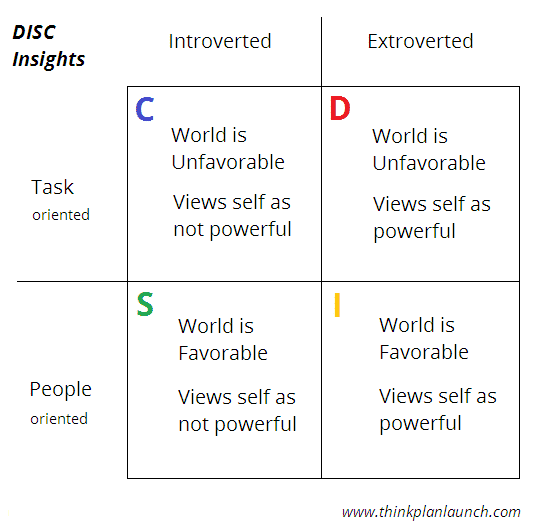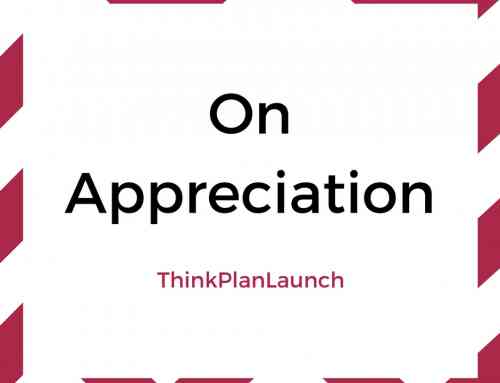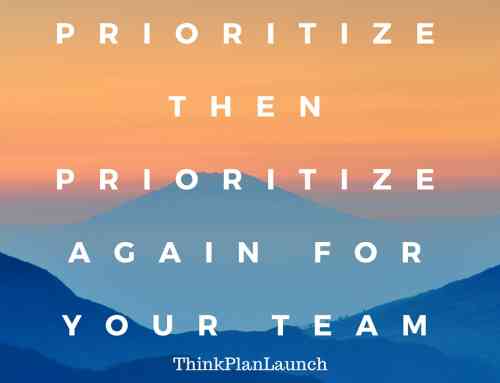In this article, we will explore the nature of the “High-I” as ranked by a DISC test.
Table of Contents
Reminder: DISC measures behavior and communication style.
When we talk about the “nature” of the High-I, what we are referring to is their visible behavior and communication style.
Remember, DISC is not actually a measure of personality even though many people think of it that way. Behavior and communication style are but two components of personality, which is comprised of many more elements.
“I” stands for Influencer.
The letter “I” in High-I stands for Influencer. The High-I is someone who is visibly expressive, talkative, and optimistic. They can sometimes come off as clowns to people who don’t understand the High-I style, but their personable nature makes them good at inspiring others and keeping energy levels high. Having a High-I around is often a quick cure for the office “blues.”
Summary of the High-I.
- Enthusiastic, sociable, and open-minded.
- Persuasive, trusting, and sometimes charming.
- People-oriented and extroverted.
- Views world as favorable.
- Views self as powerful.
- Communicates in an emotional manner.
- Good mixer; great leadership potential.
- May come off as a clown, or disorganized, due to their spontaneous and self-promoting nature.
- Examples: Bill Clinton, Will Smith, Ellen De Generes.
Adjectives that Describe the High-I.
The High-I is direct in their communication and wants results – now, not yesterday! Here is a list of adjectives associated with the High-I:
- Sociable
- Trusting
- Optimistic
- Convincing
- Warm
- Enthusiastic
- Influential
- Magnetic
- Inspiring
At the extreme (or when under stress), the High-I can become over-confident, unrealistic, and poor at listening! This stems from the High-I’s general attitude that “anything is possible.”
Since I have many High-I friends and colleagues (they’re a lot of fun!), I can speak to the truth of this. They’re great to call when you need to put a smile on your face, although sometimes can be a bit glib when under pressure.
Orientation and Attitude of the High-I.
The High-I is people-oriented (as opposed to task-oriented) and extroverted. They view the world around them as favorable. Furthermore, they believe in their personal ability to effect change upon the world around them. In other words, they view themselves as holding power over their circumstances.
This graph depicts the situation well for all DISC types:

This graph illustrates how each DISC type views the world around them, and how they view themselves; as well as their fundamental orientations.
Since the High-I views the world as favorable, they may sometimes overestimate their ability to meet deadlines and complete tasks.
There is another side of this coin, however. The optimism and positive attitude of the High-I can often make things possible when they otherwise wouldn’t be. Get too many High-Cs in a room and rampant skepticism might too easily dismantle a viable idea. The High-I will go out of their way to prove something is possible even if the odds are against them.
Perhaps the best way to explain how the High-I sees the world is to understand their “anything is possible” attitude. The High-I will accomplish things others cannot because they are willing to try. In many jobs, having an innate “I can do it” attitude is critical for success, especially if the job is particularly challenging or involves frequent rejection.
Remember, though, behavior is not a measure of emotional intelligence. Some people may look at the High-I’s big personality and simply assume they have a high EQ, because they’re “the people person.” However, this isn’t always the case. The most effective High-Is do have a high EQ and are incredible at working collaboratively with others; High-Is with low EQ may be verbal in expressing themselves but not tune in as well to those around them, losing support and credibility.
How the High-I Views Him/Herself.
The High-I typically sees him/herself as outgoing and optimistic. They may know they’re more persuasive than the average person. The higher the High-I’s emotionally intelligence, the more likely this will be the case.
But How do Others View the High-I?
When the High-I is under moderate stress, others may come to view the High-I as overly-optimistic and unrealistic.
When the High-I is under extreme stress, their behavior might be perceived as extremely talkative and over-confident to the point of fault. Some may feel the extremely stressed High-I is incapable of holding an intelligible, clear conversation.
If a High-I feels they are losing control of a situation, they may launch into “persuasion mode” and attempt to talk their way into a solution with others. Similarly, during conflict the High-I may launch into a very verbal discussion of the matter in attempt to “talk things out.”
If you’re not a High-I, what you need to understand about them is that they generally mean well. Even if it seems they’re over-selling an idea or not listening, they are doing what they’re doing because they are confident things will be okay if enough discussion is held. Unfortunately, if the High-I doesn’t moderate their talkative nature, they might turn others off and lose credibility with them permanently. Therefore the High-I must be careful to listen to others and not control conversations.
The High-I’s Strengths.
Even though the High-I can be seen as a Chatty Cathy, they have a long list of strengths. Namely, they are always focused on positive outcomes.
With their can-do attitude, they will initiate activity and get others involved to accomplish goals. They will keep their team motivated and ensure energy levels stay high, even in the face of challenge. And like the High-D, they are resilient – you can knock them down, but they will get right back up again most of the time.
These qualities make many High-I’s excellent team leaders and sales managers, capable of bringing themselves and their teams to new heights. Even as employees, having just one High-I in the room can ensure people don’t throw in the towel when the going gets tough – they’ll keep the team motivated and focused on the bright side of things.
Because of these qualities, many High-I’s become successful in sales, leadership roles, media, acting, and comedy.
They can also be quite successful in more “standard” business roles, so long as they’re getting frequent interaction with other people and not forced to look at spreadsheets (details) all day. The High-I is someone who will generally be in a customer-facing role, however.
The High-I’s Weaknesses.
We have already discussed how the High-I can become unrealistic and over-confident under stress. But what else is there?
Because the High-I operates from a belief that anything is possible, they may prematurely jump into projects that cannot be conquered. They may overlook important details and fail to verify the truth of things before taking action. Furthermore, they may rely a bit too much on their verbal abilities to accomplish their goals, even where another form of action is required.
The High-I may be a poor manager of their time. They also tend not to be the best planners and organizers – tasks which are best left for the S’s and C’s of the group. As managers, they may delegate quickly without providing enough instruction and overestimate their ability to motivate.
The High-I may also venture too deep into a losing venture, project, or idea, refusing to quit until long after the writing is on the wall. This is because of their optimistic nature – they may feel that with just a little more time (or money, effort, investment, etc.) that success is still on the horizon.
Likewise, the High-I may unintentionally break promises – they may initially commit to something, feeling optimistic about their ability to follow through, even if they are not actually in a good position to provide such commitment. They don’t want to say no, and are prone to taking on more than they can handle.
Tips for Communicating with a High-I.
With the High-I, strive to maintain a friendly demeanor. Ask them how they feel and give them space to express themselves fully (although don’t let them control the conversation, either!). Keep things light, put a smile on your face, and you’ll do alright. :-)
Things that will upset a High-I include:
- Being too business-like, cold, or factual.
- Not giving them space needed to outwardly express their thoughts, feelings, or ideas.
- Verbally hammering them with details, which are better left in writing.
Things that will make a High-I happy include:
- Being warm and friendly.
- Encouraging them to express themselves openly.
- Demonstrating a positive, we-can-do-this attitude.
Remember, the High-I is an optimistic person who believes in their ability to effect positive change on the world. They know they can and will accomplish their goals with enough effort. Hence, they enjoy being around others who support these views and tend to shy away from those who are overly pessimistic or negative – there’s simply no time for that type of counter-productive thinking in the mind of a High-I.
It might be tough maintaining a super upbeat attitude with a High-I if it’s not your natural style, but it will produce results. You’ll get them on board with you, make a great friend, and get the benefit of their positive energy and influence on the others around them.
Tips for Communicating with Others as a High-I.
If you are a known High-I (or you’re pretty sure you are!), here’s what you need to know:
As discussed earlier, others might see you as a clown if you get too carried away expressing your ideas without showing you’ve done your homework. This is especially true with High-Cs, who tend to be great fact-checkers – they may believe you are well-intended but misguided if you can’t show you know your stuff.
Therefore, for an even greater and more persuasive impact, do some extra research the next time you need to sell an idea – and put it on display for those you’re speaking with (think: numbers and charts).
Additionally, you may want to check your Emotional Quotient. High scores indicate you’re probably on the right track already in managing your relationships and communication. But even average scores, and especially low scores, can spell trouble – for you, individually – if you let it go unchecked.
By improving your emotional intelligence and people skills, you can channel your High-I energy in a way that motivates others to action and wins them to your cause. Ignore EQ and people skills, however, and you will be frustrated with your results more often than not.
The bottom line for the High-I is they should maintain their great attitude, but do a little extra homework to be taken seriously. They should also make sure they don’t unintentionally ramble or control conversations, ensuring they give the other person time to talk (and then show they are actively listening to them).
High-I’s: The Bottom Line.
Throughout this article we have critically examined the High-I: they are persuasive, generally good with people, and optimistic. They have a can-do attitude and make things happen where others cannot, but would be wise to solicit feedback from teammates with other styles to evaluate probability of success before risking resources.
How much “High-I” energy do you have?
For any given person, all of traits will be expressed relative to their level of “I” (shown on their DISC graph). The higher the “I,” the more prominent, visible, and obvious are the effects – and the more influential the person becomes. The lower the “I,” the effects are less prominent. The Low-I will generally be more distrustful, less talkative, and may tend to see the outgoing nature of the High-I as insincere.
Influence relative to the other three behavioral styles.
“I” traits are also expressed relative to a person’s scores in the other three behavioral areas (Dominance, Steadiness, and Compliance).
For example, someone with a High-I and a mid-to-high “C” factor may naturally be more careful to check facts before presenting an idea than a “Pure-I” who’s running at 95% “I” with a low Compliance score.
Someone with a High-I and a mid-to-high “D” factor will be better at wrapping up conversations when the time comes, so they can finish urgent tasks.
And the High-I who has a strong “S” will have a more balanced view of their true capabilities. They will still excel with people but slow down their pace, and take a more methodical approach to achieving their goals and objectives.
All the same, when a person’s “I” is their strongest factor – and it scores high on their graph (above 50-60%) – you will tend to see them display the traits discussed in this article. Similar to gravity, someone’s primary behavioral style is the strongest “pull” factor for them. It’s the one they will return to naturally, at rest, and/or under stress.
Moving forward.
If you know High-I’s or have them in your life, congratulations – you have just learned a whole lot about them! You now know how to communicate with them more effectively, and you understand them better. You also know how outgoing and optimistic they are, and how to communicate with them most effectively.
If you are a High-I, you also get a big congratulations! You have learned about yourself, including your strengths and limitations – and what to do about them. Focus on improving your emotional intelligence, and lean on others as necessary to guide you at times (those with other behavioral strengths). This will keep you on track to achieve your many goals in the most efficient way possible.




Leave A Comment